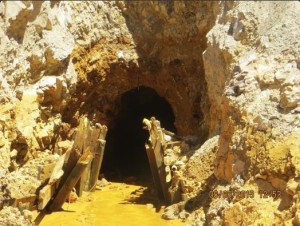Colorado’s late great Senator Bill Armstrong was known for taking days or even weeks to “think about” an issue, without ever reaching a decision on something his staff (including me) thought hyper-urgent. Often it turned out to be less so, as problems often resolved themselves without the need for him to spend time on them. He taught us how many apparent crises will go away if ignored long enough.
Many problems eventually go away if ignored: houseplants, mosquito bites, salesmen. Armstrong also understood, of course, that some problems cannot be neglected. Ignoring hunger, crime, and injustice will not make them go away. Nor should we destroy by inattention our friendships, ambitions, or health.
Public officials try to make scandals fade from memory by ignoring them. The latest is the scandalous cover-up of EPA’s reckless Gold King Mine disaster that poisoned the Animas and San Juan Rivers in 2015. Almost every month, newly-exposed details make the official company line less believable. It cannot be ignored – because the truth has yet to be completely confessed, and because we all know EPA would have destroyed the lives and livelihoods of anyone else who caused such a disaster, even accidentally. Others would have been fined millions, and probably gone to jail, while EPA continues to hide the true story of what happened.My friend Rob Gordon, who ran the year-long congressional investigation of the disaster as staff director of the Subcommittee on Oversight and Investigations, continues his research and writing for the Heritage Foundation. His latest article (Daily Signal July 26) exposes the deceitful “final report” of the EPA Inspector General (IG), which should not be the final word. It simply continues the false narrative agreed upon by EPA officials about a sudden unplanned geologic accident that nobody could have anticipated.
The report claims the agency “had no intention of opening the mine that day; rather, they were exposing the blockage and the bedrock to better assess conditions and determine next steps.” In fact, EPA and its contractor had completely exposed the mine’s natural plug, reburied it, and then methodically dug into the top of it. They did so, according to the Interior Department’s independent investigation, “attempting to relieve hydrologic pressure” by “removing small portions of the natural plug.” That’s especially telling in light of the EPA’s claim that it never knew the water was under any pressure, and never touched the plug itself.
EPA site managers say they thought the floor of the mine was at least six feet lower than the outside ground, though photos and other evidence showed otherwise, as did their own preliminary site work. The very purpose of the plugged tunnel (called an adit) was to drain the mine, so it is common sense that the drain wasn’t installed six feet above the ground, or there would always be six feet of water inside. They could also have done hydrostatic pressure testing to be sure, before digging into the plug, but did not do so.
Thanks to photos taken the day before and the day of the disaster, we now know the workers had excavated the entire plug and then reburied it. So obviously they knew exactly where the plug was, how large it was, and where the top was. Yet they claimed to be digging “about 20 feet up” when the plug itself just inexplicably burst. That is plainly not what happened.
The IG report quotes part of an instruction memo from the project supervisor (who was on vacation), while omitting another part, the part about digging into the plug. That part of his memo was conveniently omitted from the IG report, as was the important Interior Department analysis, and the photographic evidence obtained by the House Committee.
That committee’s report was published months before the IG’s investigation, so he certainly knew about it, and had access to all the evidence. Instead, the “final report” continues to ignore the gross negligence that caused the disaster, and sends a message that EPA cannot be held accountable in the same way it superciliously holds others.
Technical details of this cover-up are boring enough that my eyes glaze over just recounting them. That is exactly what the EPA is counting on: that we’ll all get bored, move on to the next big news, and forget this ever happened. The people of Southwestern Colorado, especially, deserve better. Whether anyone is held accountable is now up to the new Administration, but the truth will come out. This one cannot and should not be ignored.
This column originally appeared in the Grand Junction Daily Sentinel August 4, 2017.





Comments on this entry are closed.